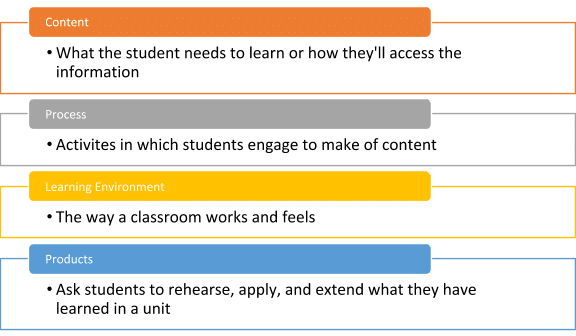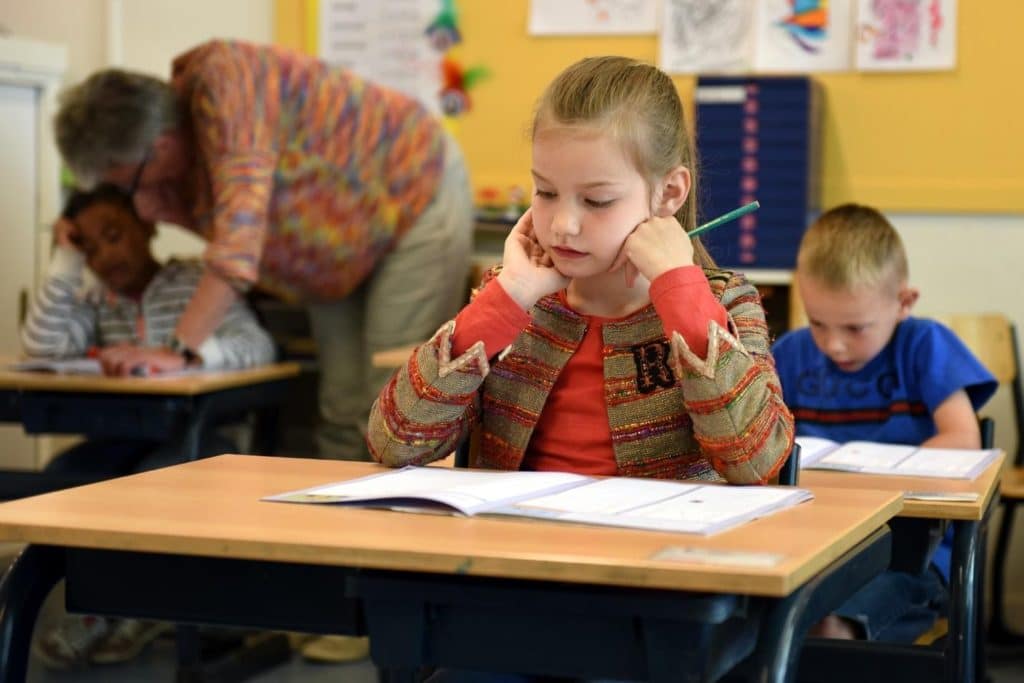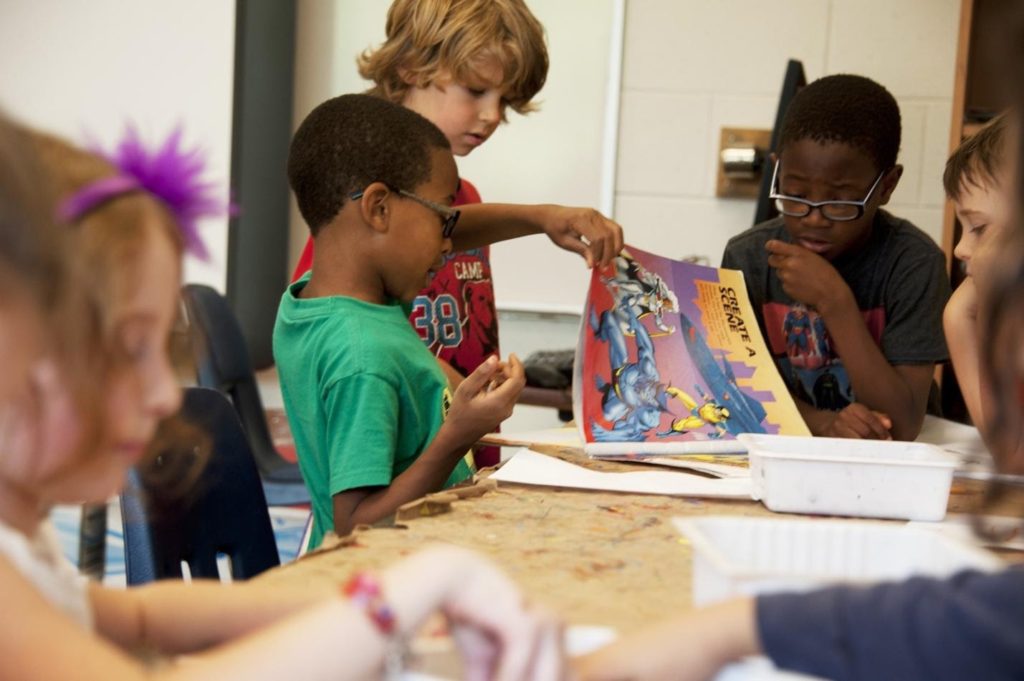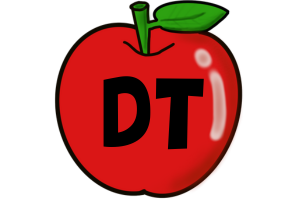Just as everybody has a unique fingerprint, each student has an individual, distinctive learning style. There are great chances that not all your students grasp a subject in the same manner or share a mutual ability level.

Therefore, as an educationist, how can you better deliver your instructions and lessons so that it reaches everybody in your class?
If you don’t know which road to take, consider differentiated instruction – a teaching method you might have heard about but have not explored. That is why you are here.
In this article, you will learn:
- What is differentiated instruction?
- How does it work?
- Fundamental principles of differentiated instruction
- Four ways to differentiate learning
- The benefits and shortcomings of differentiated instruction
- Effective differentiated instruction strategies
So, let’s dive in!
What is Differentiated Instruction?
Differentiated instruction and assessment is also commonly known as differentiated learning or simply, differentiation – it is a philosophy or framework for effective teaching that implicates giving all students within their assorted classroom community of learners a variety of different avenues for comprehending new information (usually in the same classroom) in terms of acquiring content; processing, composing, or making sense of notions; and formulating assessment measures and teaching materials so that all pupils within a class can effectively learn, irrespective of differences in their ability.
Carol Ann Tomlinson is a pioneer in the field of differentiated learning, and she defines it as factoring students’ levels of readiness and distinct learning styles first before devising a lesson plan. Many research pieces related to the effectiveness of differentiation show that this teaching method benefits a broad range of students – from those with learning disabilities to students who’re considered high ability.
How does it work?
Teachers who exercise differentiation learning in the classroom might:
- Group students by shared topic, interest, or ability for assignments.
- Design unique lessons grounded in students’ learning styles.
- Evaluate students’ learning by means of formative assessment.
- Persistently evaluate and modify lesson content to meet students’ requirements.
- Manage the classroom to create a supportive and safe environment.
Fundamental Principles of Differentiated Instruction
Differentiating learning is teaching the same lesson content to all students by using an assortment of instructional strategies. It might require the instructor to deliver lessons at wavering levels of difficulty based on each student’s ability. Here are some key principles that lay the foundation for differentiated instruction.
#1: Unremitting, formative evaluation: Instructors should incessantly assess to recognize students’ strengths and areas of need to effectively meet students where they’re and assist them in moving forward.
#2: Identifying diverse learners: It is essential for teachers to recognize that the students they teach have diverse levels of experience and expertise regarding writing, reading, speaking, thinking, and problem-solving. Ongoing and consistent evaluations can enable teachers to cultivate differentiated lesson plans that meet every student’s needs.
#3: Group work: In differentiated learning, students are asked to collaborate in small groups or pairs, but membership can be changed whenever needed. Learning in small groups allows students to observe and learn from each other and engage in meaningful discussions.
#4: Problem-solving: In differentiated instruction, the focus in classrooms is on issues and concepts rather than ‘the chapter’ or ‘the book.’ This emboldens all students to explore important ideas and expand their comprehension of key concepts.
#5: Choice: In differentiated learning, teachers are advised to offer their students choices regarding writing and reading experiences and in projects or tasks to be undertaken by them. It’s vital to understand that by negotiating with students, instructors can develop encouraging assignments that meet the diverse needs and varied interests of students.
Differentiations ask teachers to persistently strive to identify and respond to every students’ needs and interests to maximize learning.
4 Ways to Differentiate Instruction to Maximize Learning
Instructors can differentiate learning in the classroom in at least four ways based on student’s interest, readiness, or learning profile:

Let’s take a more in-depth look into each of the differentiating elements:
Element #1: Content
It is already quite evident that basic lesson content must encompass the standards of learning fixed by a state educational standards or school district. But certain students in your classroom may be utterly unfamiliar with concepts present in a lesson, have partial mastery, or perhaps they are already familiar with the content before the lesson commences.
So, what could you do differently to tackle such scenarios?
As an educator, you can differentiate the content by planning activities for groups of learners that involve various levels of Bloom’s Taxonomy – a categorization of six intellectual behavior levels that move from lower-order thinking skills to higher-order thinking skills. The six levels are:
- Remembering
- Understanding
- Applying
- Analyzing
- Evaluating
- Creating
Students who’re unacquainted with a lesson can be asked to complete tasks on the lower levels: understanding and remembering. Whereas, students with some previous knowledge or mastery can be asked to analyze and apply the content. Finally, students who have greater levels of mastery can be probed to undertake tasks in the capacity to evaluate and create.
Some common examples of differentiating content involve the following:
- Using vocabulary or spelling lists at readiness levels of students
- Utilizing reading lesson content at varying readability levels
- Placing text materials on tape
- Displaying ideas through both visual and auditory means
- Using reading buddies
- Meeting with small groups to re-teach a skill or an idea for struggling learners or to strengthen the skills or thinking of advanced learners

Element #2: Process
Every student has a preferred learning style, and effective differentiation involves delivering the lesson material to each style: auditory, kinesthetic, visual, and through words. This process-oriented approach also addresses the fact that not all learners need the same extent of support from the instructors.
Moreover, it also shows that students can choose to work individually, in pairs, or in small groups.
While some students might benefit from one-on-one interaction with the classroom aide or you, many others might progress by themselves. Remember, as a teacher; you can enrich learning by providing support based on individual needs.
Some common examples of differentiating the process involve the following:
- Offering hands-on supports or other manipulatives to students who need them
- Provide kinesthetic learners the opportunity to undertake and complete an interactive assignment online.
- Undertaking tiered activities via which all students work with mutual skills and understandings but proceed with varying levels of support, complexity, or challenge.
- Creating personal agendas – task lists scripted by the teacher and encompassing both work that addresses individual needs of students and in-common work for the entire class – to be finished either during stated agenda time or as learners complete other work early.
- Offering interest centers that encourage learners to explore subsections of the class topic of specific interest to them.
- Wavering the length of time a learner might take to complete a task to provide extra support for a struggling student or to embolden an advanced student to pursue a subject in greater depth.
Element #3: Product
The product is what the students create at the end of the class lesson to exhibit the content’s mastery. It can be in the form of projects, tests, reports, or other activities. You can assign learners to undertake activities that display mastery of an educational concept in a way the learner prefers, based on their unique learning style.
Some common examples of differentiating the end product involve the following:
- Allowing students to work in small groups or individually on their products
- Providing learners with options for expressing required learning, such as developing a mural with labels, writing a letter, and creating a puppet show.
- Using rubrics that extend and match students’ varied skills levels
- Allow students to design their own product assignments as long as it contains required elements.
- Visual learners develop a graphic organizer of the story.
- Kinesthetic students create a diorama illustrating the story
- Auditory students give an oral report
Element #4: Learning Environment
The conditions for prime learning involve both psychological and physical elements. Hence, a flexible classroom layout is key, which should incorporate numerous kinds of arrangements and furniture to support both group and individual work. In addition, psychologically speaking, instructors should utilize classroom management practices that encourage a safe and supportive learning environment.
Some common examples of differentiating the learning environment involve the following:
- Ensuring there are places in the classroom to work quietly and without any distractions, as well as spaces that tempt student collaboration.
- Creating and announcing clear guidelines for independent work that equivalents individual needs.
- Giving materials that reflect an assortment of home and cultural settings.
- Helping learners understand that some students need to sit quietly to learn, while others need to move around to do better.
- Creating routines that allow learners to get help when instructors are busy with other students and can’t help them instantaneously.
The Benefits & Shortcomings of Differentiated Instruction
The shortcomings of an ever-mounting workload typically accompany the benefits of differentiated learning in the classroom. Thus, here are some factors to keep in mind:

Benefits of differentiated learning
- Research pieces show that differentiated learning is effective for high-ability students and also for students with severe to mild disabilities
- Students seem to be more engaged in learning, and reportedly there are lesser discipline issues in classrooms where instructors offer differentiated lessons.
- When students are provided with more options for studying course material, they take more responsibility for their learning.
Shortcomings of differentiated learning
- Differentiated instruction entails more work during lesson planning, and several teachers greatly struggle to find or create that extra time in their schedule.
- Critics argue there is not adequate research to support the advantages of differentiated learning outweighing the supplementary prep time.
- The learning curve can often be steep, and many schools lack professional development resources.
3 Effective Differentiated Instruction Strategies
Here are some successful differentiated learning strategies that can help you maximize learning in the classroom:
#1: Develop learning stations
Deliver varying kinds of content by setting up learning stations – a classroom divided into different sections through which groups of students rotate. This can be facilitated with a flexible seating plan.
Every station must utilize a unique method of teaching a concept or skill related to your lesson.
For instance, learners can rotate between stations that encompass:
- Creating artwork
- Watching a video
- Reading an article
- Listening to you teach
- Completing puzzles
To help your students process the content once they have been through the stations, you can assign questions to answer or hold a class discussion.
#2: Interview students
Asking questions related to studying and learning styles can help you identify the content types that’ll fulfill your class’s needs. While running a large group activity or learning stations, pull each pupil aside for a few minutes and ask about:
- Their favorite in-class activities
- Their favorite kinds of lessons
- Which projects they are most proud of
- What kinds of exercises allowed them to remember key lesson points
Track your outcomes to ascertain themes and students with special preferences. This will help you to establish which methods of instruction best suits their abilities.
#3: Target different senses within class lessons
A lesson will resonate with more students if it targets auditory, visual, kinesthetic, and tactile senses instead of only one. When pertinent, target a range of learning styles by:
- Using infographics
- Playing videos
- Providing audiobooks
- Incorporating illustrations and charts within texts
- Getting students to perform a scene
- Giving both written and spoken directions to tasks
- Allotting time to students to create artistic interpretations and reflections of lessons
- Use relevant physical objects, such as physical cash notes, when teaching math skills
Not only will these differentiating techniques help more learners to grasp the core concepts of a lesson, but it also helps to make the class more engaging.
Keep in mind that these are just a few of the many differentiated learning strategies that can help you provide improved learning and classroom experience for all your students.
Differentiation Strategies: Tailoring Instruction to Meet Diverse Needs
Differentiated instruction involves employing various strategies to meet the diverse needs of students in the classroom. By addressing differences in readiness, interests, and learning profiles, teachers can ensure that all students have access to meaningful and engaging learning experiences.
Content Differentiation: Content differentiation involves modifying the lesson content to match students’ readiness levels and interests. Teachers can provide different reading materials, adjust the complexity of assignments, or offer varied resources to accommodate individual learning needs. For example, advanced learners might engage in extension activities or explore related topics in greater depth, while struggling learners receive additional support and scaffolded materials.
Process Differentiation: Process differentiation focuses on the instructional methods and learning activities. Teachers can design a range of learning tasks and provide multiple pathways for students to engage with the content. This might involve using hands-on activities, multimedia resources, collaborative projects, or technology-based learning. By offering diverse approaches, teachers can cater to different learning styles and preferences.
Product Differentiation: Product differentiation allows students to demonstrate their understanding of the content through various forms of assessment or projects. Students can showcase their learning by creating presentations, designing models, writing reports, or engaging in performances. By providing options for product creation, teachers encourage students to leverage their strengths and express their understanding in ways that resonate with their learning styles.
Learning Environment Differentiation: Creating a supportive and inclusive learning environment is crucial for differentiation. Teachers can arrange flexible seating options, establish norms for collaboration, and foster a positive classroom culture where students feel valued and respected. By adapting the physical environment and promoting a sense of belonging, teachers enhance students’ engagement and participation in the learning process.
Individualized Instruction: Meeting Students’ Unique Needs
Individualized instruction is a key component of differentiated learning. It involves tailoring instruction to address each student’s specific strengths, challenges, and interests. By understanding students as unique learners, teachers can provide targeted support and promote optimal learning outcomes.
Ongoing Assessment: Ongoing assessment is essential for individualized instruction. Teachers collect data through formative assessments, observations, and student work samples to gauge students’ progress and identify areas for growth. This information helps inform instructional decisions and enables teachers to adjust their teaching strategies to meet individual needs.
Flexible Grouping: Flexible grouping allows teachers to organize students into small groups based on their readiness levels or interests. This allows for targeted instruction, peer collaboration, and differentiated learning experiences. Grouping can be temporary or long-term, and it provides opportunities for students to learn from and with their peers, benefiting from shared expertise and diverse perspectives.
Personalized Learning Plans: Developing personalized learning plans for students involves setting individual goals, identifying specific learning targets, and designing customized instructional approaches. These plans outline the steps, resources, and support needed for students to achieve their learning objectives. By involving students in the process, teachers empower them to take ownership of their learning and track their progress.
Flexible Instructional Strategies: Individualized instruction requires flexibility in instructional strategies. Teachers must be responsive to students’ learning styles, preferences, and needs. This might involve adapting teaching methods, differentiating assignments, providing additional resources or support, or offering alternative assessments. By tailoring instruction to the individual, teachers maximize student engagement and success.
Classroom Management: Creating an Inclusive Learning Environment
Effective classroom management is essential for creating an inclusive and supportive learning environment that fosters differentiation. A well-managed classroom sets the stage for meaningful learning experiences and ensures that all students can actively participate and thrive.
Establishing Norms and Expectations: Teachers establish clear expectations and norms for behavior, participation, and collaboration in the classroom. By setting these guidelines, teachers create a safe and respectful environment where all students feel valued and can contribute without fear of judgment or criticism.
Flexible Seating: Flexible seating arrangements provide students with options for where and how they work. By offering a variety of seating choices such as bean bags, standing desks, or floor cushions, teachers accommodate students’ individual needs and preferences, promoting comfort and engagement during learning activities.
Effective Transitions: Smooth transitions between activities and lessons minimize disruptions and maximize instructional time. Teachers can implement strategies such as visual cues, timers, or transition routines to help students transition smoothly from one task to another, ensuring a focused and efficient learning environment.
Collaborative Learning Structures: Creating opportunities for collaborative learning allows students to work together, share ideas, and learn from one another. Cooperative learning structures, such as think-pair-share, jigsaw activities, or group projects, promote active engagement and build a sense of community in the classroom.
Assessment and Feedback: Guiding Individual Growth
Assessment and feedback play a critical role in supporting individualized instruction and facilitating student growth. Through ongoing assessment and timely feedback, teachers can identify students’ strengths, areas for improvement, and provide guidance for their learning journey.
Formative Assessment: Formative assessments provide ongoing feedback on students’ progress and understanding throughout the learning process. By using a variety of formative assessment strategies, such as questioning techniques, exit tickets, or classroom discussions, teachers can gather valuable insights and make informed instructional decisions.
Individual Feedback: Providing individualized feedback helps students understand their strengths, areas for improvement, and how they can progress further. Teachers can offer specific feedback, highlight growth, and suggest strategies for improvement, promoting metacognition and self-reflection in students.
Goal Setting: Collaborative goal setting involves students in the process of identifying their learning goals and creating action plans. By involving students in setting meaningful goals, teachers encourage self-directed learning and empower students to take ownership of their academic growth.
Progress Monitoring: Regularly monitoring students’ progress allows teachers to track individual growth, identify areas of challenge, and adjust instruction accordingly. This can involve check-ins, conferences, or student reflections to gain insights into students’ learning experiences and provide targeted support.
By addressing these key aspects of differentiation, teachers can create dynamic and inclusive learning environments that cater to students’ unique needs, promote engagement, and facilitate optimal learning outcomes.
Final Thought
Differentiated instruction refers to tailoring your instruction to meet the individual needs of your students. Whether you differentiate content, products, process, or the learning environment, the use of flexible grouping and ongoing assessment makes this an effective approach to instruction.
For more useful teaching tips and tricks, click here.


